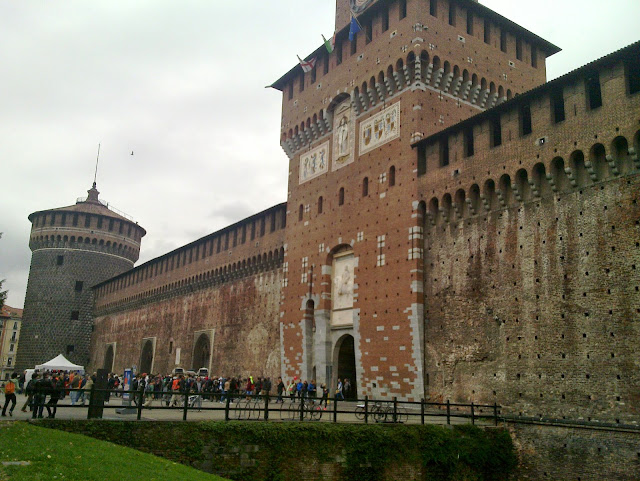One of the most famous monuments in Milan is a Sforzesco Castle, which during its long history was a residence, military camp and even the jail.
Its history began in 1358, when Galeazzo Visconti decided to build the fortress and the residence for his family. The work was done very quickly. Only in ten years after on the suburb of the city arose a castle surrounded by walls with towers on its corners.
The descenders of Galeazzo (Gin and Filippo Maria) enlarged the castle but after the death of Filippo Maria Visconti castle has been almost razed by the people during the times of so-called Ambrosian Republic.
Young Republic was in the state of war with Venice and it gave a chance to the military leader of Milan Francesco Sforza snap the power in the city. When Sforza became a new ruler of the city, he restored the castle and gave his name to it.
The heyday of Sforza Castle was during the Ludovico Sforza reign who transformed it into the wonderful palace. Ludoviko invited most famous artists of his time including Bramante and da Vinci for castle decoration and Sforzesco Castle became one of the cutest places in Europe.
Unfortunately, after the fall of the Sforza dynasty and following Milan occupation by foreign troops, castle has not been used as the residence. It was neglected and transformed into the military barracks. As result many of pieces of arts in the castle (including murals by da Vinci) where destroyed.
In the 16 century Spanish troops built new lines of fortifications around the Sforzesco Castle. But at the beginning of the 19 century they were demolished according to the Napleon decree. Today some of the remnants of the Spanish fortifications are visible in the Sempione Park.
At the second part of the 19th century the castle was in so bad conditions that city authorities even thought to demolish the castle and clear area around it.
Castle was saved thanks to the architect Luca Beltrami who proposed to restore it and place there public museums. The renovated work started in 1893 and in 1900 Sforza Castle has been open for publicity.
Today castle stands in good conditions with well-restored walls and towers. One of the most interesting things in the castle - is the Inner Courtyard (Corte Ducal) which looks like in the Renaissance times.
Castello Sforzesco hosts a number of interesting museums. The Archeological Museum holds many of prehistoric artefacts as well as the items of Roman times. The Art Museum contains medieval furniture collection and the art gallery. Another interesting museum of the Castello Sforzesco – is an musical instruments museums where you can see medieval instruments.

















































